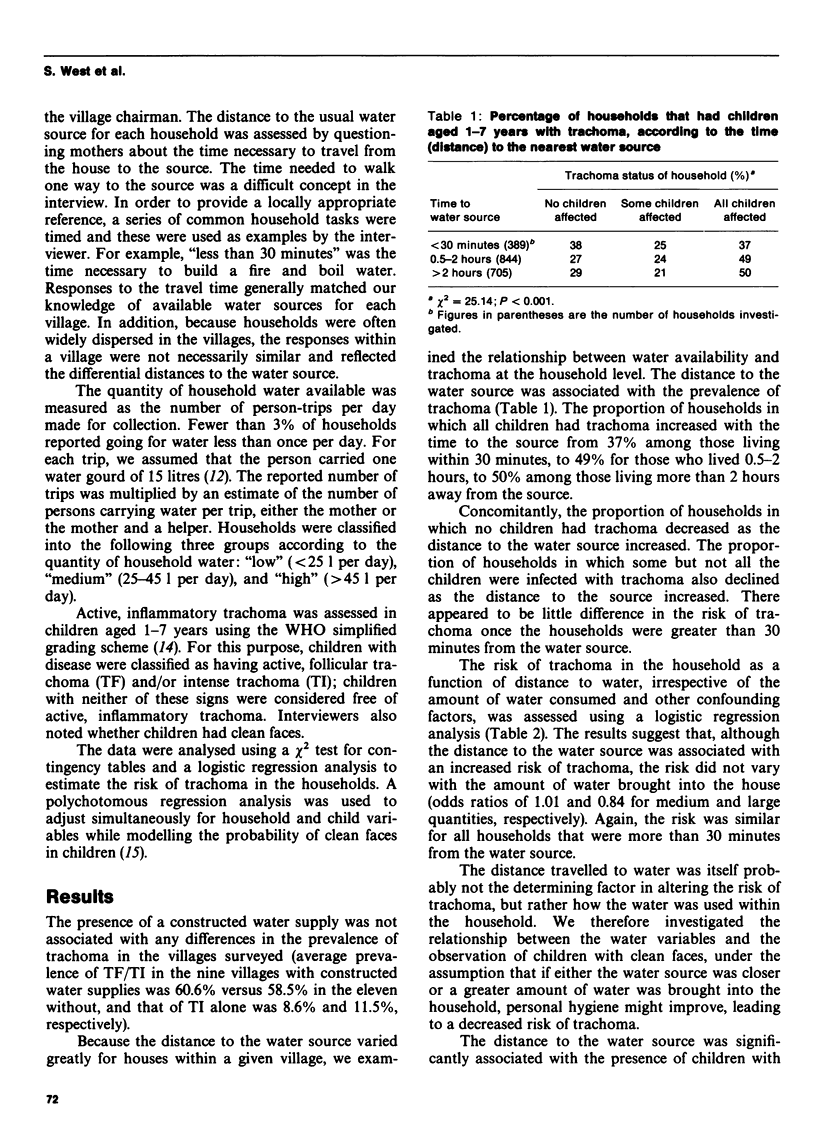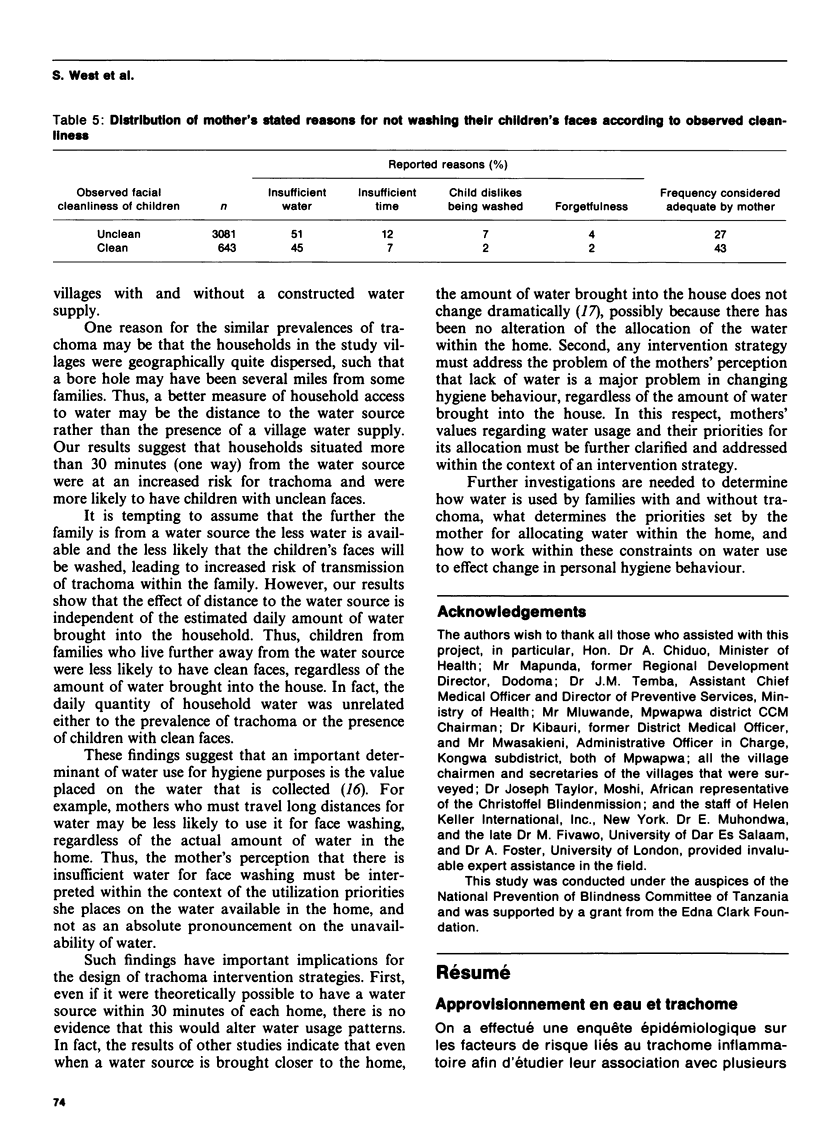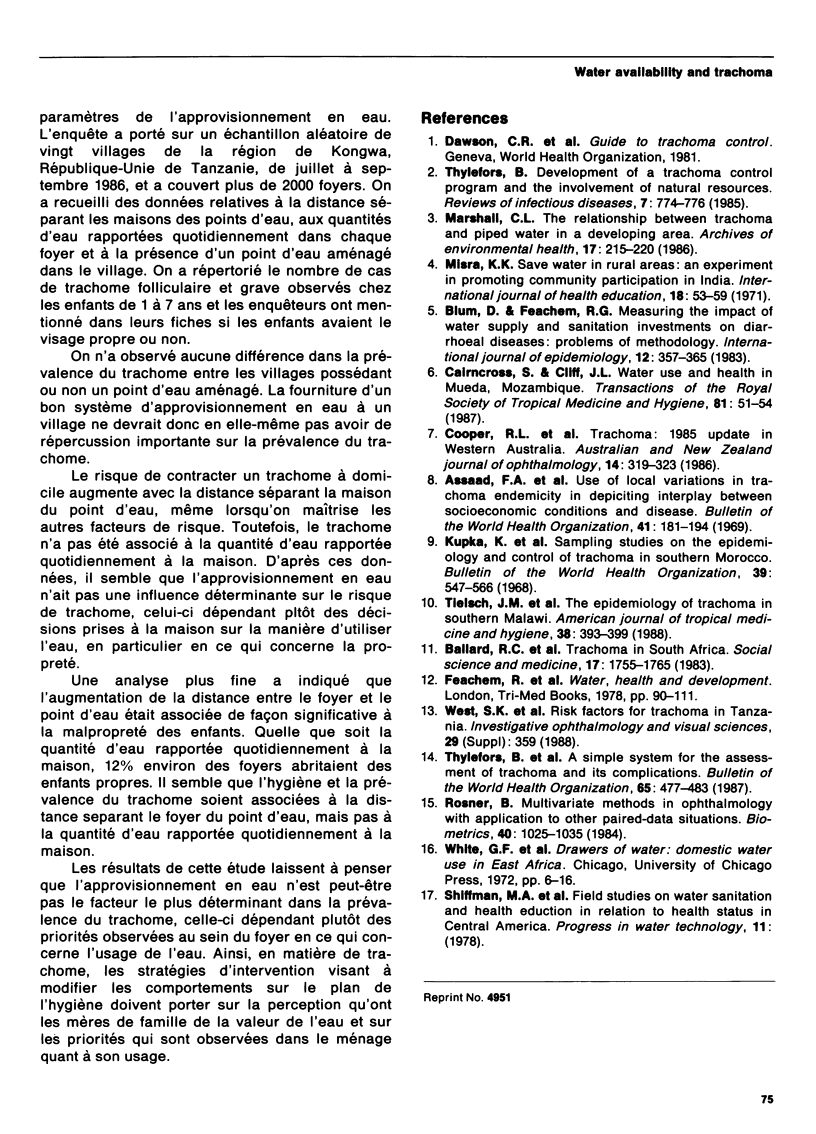Abstract
As part of an epidemiological survey of risk factors for trachoma in 20 villages in the United Republic of Tanzania, we investigated the relationship of village water pumps, distance to water source, and quantity of household water to the risk of inflammatory trachoma. We also evaluated whether there was an association between the cleanliness of children's faces and these water variables. No association was found between the presence of a village water supply and the prevalence of trachoma. However, the risk of trachoma in the household increased with the distance to a water source--although there was no association with the estimated daily amount of water brought into the house. Likewise, children were more likely to have unclean faces if they lived more than 30 minutes from a water source, but whether they had clean faces was not associated with the daily quantity of water brought into the household. The effect of the distance to water supply on trachoma may well reflect the value placed on water within the family, and this determines the priority for its use for hygiene purposes. The results of the study suggest that changing the access to water per se may be insufficient to alter the prevalence of trachoma without also a concomitant effort to change the perception of how water should be utilized in the home.
Full text
PDF




Selected References
These references are in PubMed. This may not be the complete list of references from this article.
- Assaad F. A., Maxwell-Lyons F., Sundaresan T. Use of local variations in trachoma endemicity in depicting interplay between socio-economic conditions and disease. Bull World Health Organ. 1969;41(2):181–194. [PMC free article] [PubMed] [Google Scholar]
- Blum D., Feachem R. G. Measuring the impact of water supply and sanitation investments on diarrhoeal diseases: problems of methodology. Int J Epidemiol. 1983 Sep;12(3):357–365. doi: 10.1093/ije/12.3.357. [DOI] [PubMed] [Google Scholar]
- Cairncross S., Cliff J. L. Water use and health in Mueda, Mozambique. Trans R Soc Trop Med Hyg. 1987;81(1):51–54. doi: 10.1016/0035-9203(87)90280-x. [DOI] [PubMed] [Google Scholar]
- Cooper R. L., Coid D., Constable I. J. Trachoma: 1985 update in Western Australia. Aust N Z J Ophthalmol. 1986 Nov;14(4):319–323. doi: 10.1111/j.1442-9071.1986.tb00466.x. [DOI] [PubMed] [Google Scholar]
- Kupka K., Nizetic B., Reinhards J. Sampling studies on the epidemiology and control of trachoma in southern Morocco. Bull World Health Organ. 1968;39(4):547–566. [PMC free article] [PubMed] [Google Scholar]
- Marshall C. L. The relationship between trachoma and piped water in a developing area. Arch Environ Health. 1968 Aug;17(2):215–220. doi: 10.1080/00039896.1968.10665216. [DOI] [PubMed] [Google Scholar]
- Rosner B. Multivariate methods in ophthalmology with application to other paired-data situations. Biometrics. 1984 Dec;40(4):1025–1035. [PubMed] [Google Scholar]
- Thylefors B., Dawson C. R., Jones B. R., West S. K., Taylor H. R. A simple system for the assessment of trachoma and its complications. Bull World Health Organ. 1987;65(4):477–483. [PMC free article] [PubMed] [Google Scholar]
- Thylefors B. Development of trachoma control programs and the involvement of national resources. Rev Infect Dis. 1985 Nov-Dec;7(6):774–776. doi: 10.1093/clinids/7.6.774. [DOI] [PubMed] [Google Scholar]


